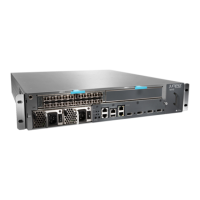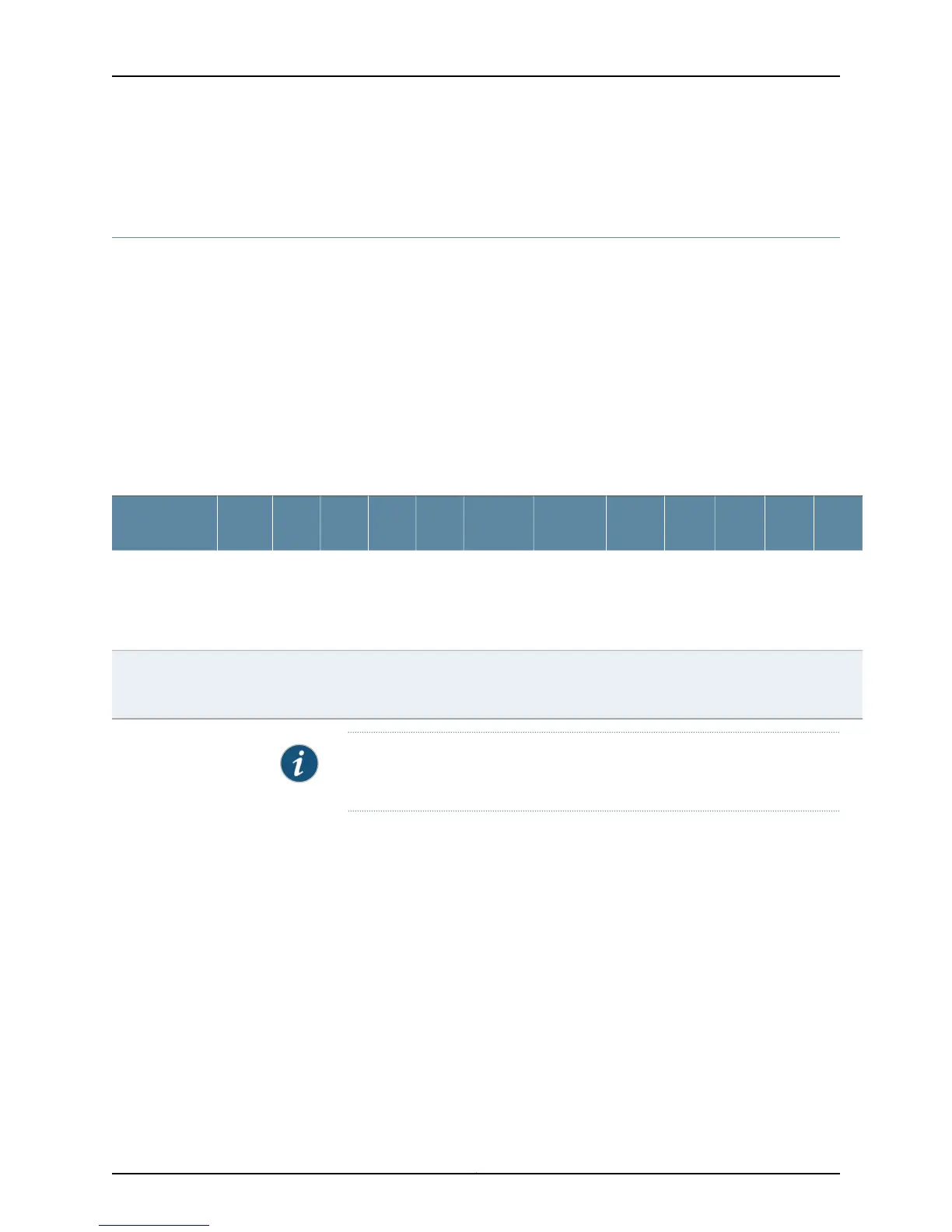Related
Documentation
Understand FPCs on page 215•
Understanding FPCs
Inspect the FPCs to ensure that they connect PICs to the rest of the router so that incoming
packets are forwarded across the midplane to the appropriate destination port.
The FPC is a component of the Packet Forwarding Engine. FPCs house the various PICs
used in the router.
The FPCs installed in the router depend on the platform and the PICs needed. Table 57
on page 215 provides some FPC characteristics for each router type.
For a listing of available FPCs and supported PICs, see the appropriate router hardware
guide and router PIC guide.
Table 57: FPC Characteristics Per Routing Platform
T1600T640T320M320M160M120M40eM40M20M10iM7i
M5/
M10
FPC
Characteristic
FPC1,
FPC2,
FPC3,
FPC4
FPC2,
FPC3
FPC1,
FPC2,
FPC3
FPC1,
FPC2,
FPC3
FPC1,
FPC2
FPC1,FPC2,
FPC3
M40e-FPC1,
M40e-FPC2
FPCFPCFPC
built
into
the
router
FPC
built
into
the
router
FPC
built
into
the
FEB
FPC types
supported per
router
888886 (4 FPCs
and 2
cFPCs)
884211/2FPC slots per
router
NOTE: The TX Matrix and TX Matrix Plus routers support the FPCs on the
T640 and T1600 routers interconnected, respectively, for these routers.
Figure 87 on page 216 shows the location and numbering of the FPCs in each router
platform.
215Copyright © 2012, Juniper Networks, Inc.
Chapter 7: Monitoring FPCs

